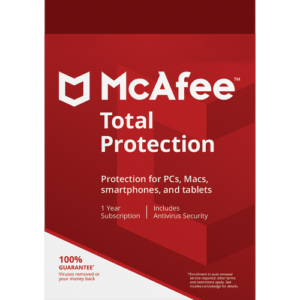A Multi-Device Security Plan is a comprehensive strategy designed to safeguard all the devices used in our increasingly interconnected digital world. In an era where individuals and organizations rely on a variety of devices like smartphones, tablets, laptops, and desktop computers, as well as IoT (Internet of Things) devices, ensuring the security and privacy of sensitive data and digital activities is of paramount importance. Such a plan typically includes a combination of hardware, software, and behavioral practices to mitigate security risks effectively.
Key components of a Multi-Device Security Plan:
- Antivirus and Anti-Malware Software: Utilizing reputable antivirus and anti-malware software on all devices helps detect and remove potential threats, protecting against viruses, Trojans, and other malicious software.
- Firewalls: Implementing firewalls on both network routers and individual devices creates an additional layer of protection against unauthorized access and data breaches.
- Regular Software Updates: Keeping all devices and their software up-to-date is essential. Updates often include patches for security vulnerabilities, preventing potential exploits.
- Strong Passwords and Biometrics: Enforcing the use of strong, unique passwords, and biometric authentication methods (like fingerprint or facial recognition) can prevent unauthorized access.
- Encryption: Data should be encrypted both in transit and at rest to protect it from eavesdropping or theft.
- Two-Factor Authentication (2FA): Enabling 2FA adds an extra layer of security, requiring users to provide two forms of verification before accessing their accounts or devices.
- Backup and Recovery Plans: Regularly backing up data on all devices ensures that important information can be restored in case of a security breach or device failure.
- Awareness and Training: Educating users about the importance of security, recognizing phishing attempts, and practicing safe online behavior is crucial.
- Remote Wiping and Locking: In case a device is lost or stolen, having the ability to remotely wipe or lock it can prevent unauthorized access to sensitive data.
- IoT Device Security: Secure the growing number of IoT devices by changing default passwords, keeping firmware updated, and segregating them from critical networks.
- Regular Security Audits: Periodically assess the security posture of all devices and networks to identify vulnerabilities and address them proactively.
- Incident Response Plan: Develop a plan for responding to security incidents, including procedures for reporting and mitigating breaches.
A Multi-Device Security Plan should be tailored to individual or organizational needs, balancing usability and security. Regular reviews and updates are essential to adapt to evolving threats in the digital landscape. In a world where data and information are invaluable assets, this plan is vital for protecting one’s digital life and ensuring the confidentiality, integrity, and availability of personal and sensitive data across all devices.
- Display 15 Products per page

 McAfee Antivirus Plus
McAfee Antivirus Plus McAfee AntiVirus Plus
McAfee AntiVirus Plus

